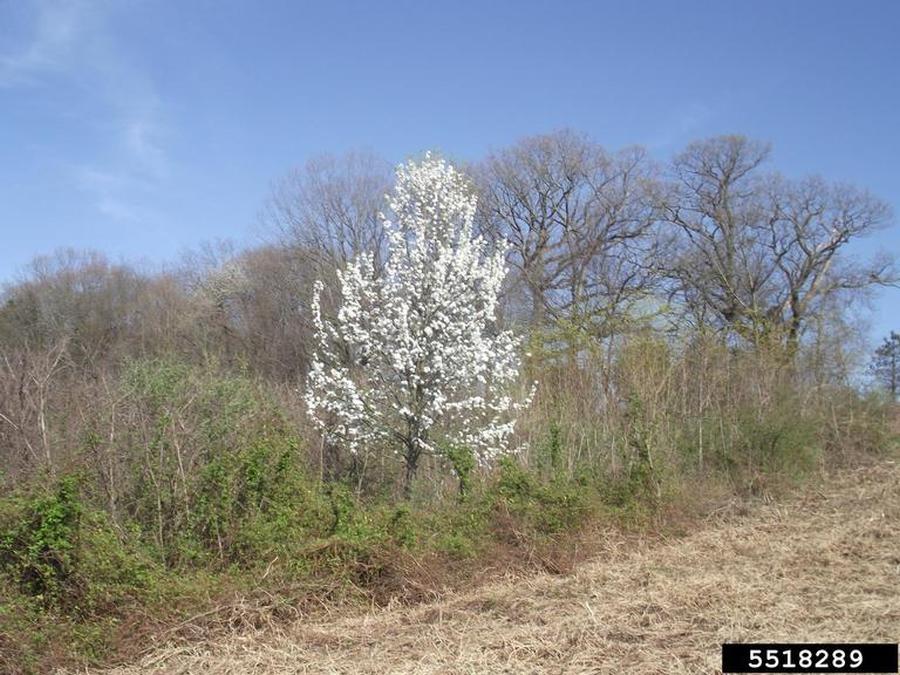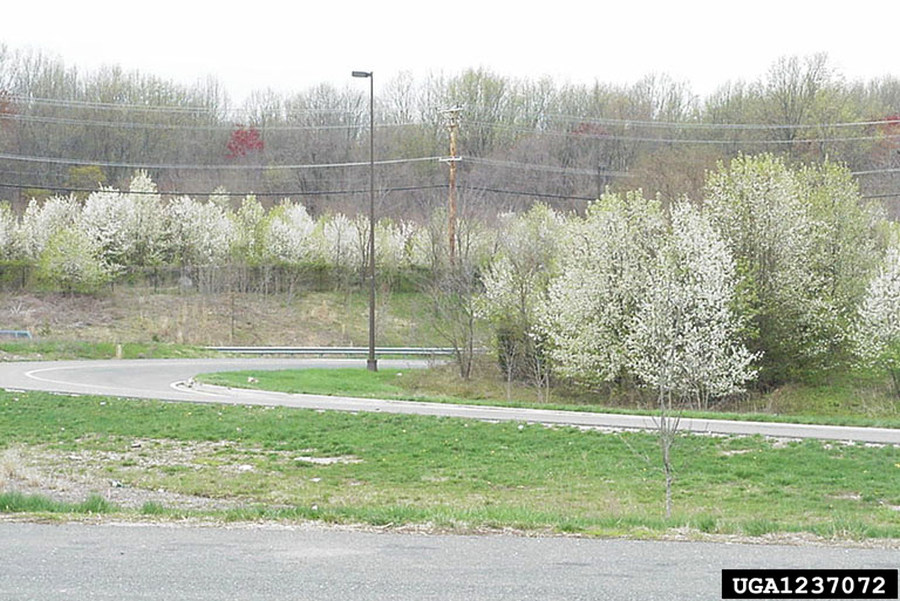
15 April 2019
Yesterday I noticed white flowering trees on the hills and swales near Robinson Town Centre (I-376 West). “How nice,” I thought, “Who planted those trees in the empty places?” No one. They’re invasive.
April is the perfect time to see the invasive extent of callery pears (Pyrus calleryana) because they bloom before our native white-flowering trees: chokecherry, downy serviceberry (shadbush), and hawthorn.
Originally imported from China in the early 1900s as root stock for pear orchards, USDA bred them as landscape trees in the 1950s and came up with a winning cultivar, the thorn-less sterile “Bradford pear.”
From 1960 to the 1990s callery pears were wildly popular as street trees in suburbia. They’re pretty in early spring, colorful in fall, and they grow well in the full sun and disturbed soil found in new subdivisions. The Bradford cultivar is also brittle so commercial plant breeders created other cultivars. That’s when the genie came out of the bottle.
In a single cultivar population the fruits are sterile but if two different cultivars are planted near each other, or even grafted together, insects cross-pollinate them and the trees produce fertile fruit. Birds eat the fruit and disperse the seeds. The trees escape to the wild.
Callery pears grow anywhere. A patch can start with a single tree that becomes a thicket in several years. Dense thickets push out all native species. To make matters worse, the wild trees can have 3-inch thorns! If you brush-hog them they still come up!

Callery pears now grow wild from Texas to New York and Massachusetts. They’re listed as invasive in eight states including our own: Pennsylvania, Maryland, Virginia, South Carolina, Georgia, Alabama, Tennessee, and Illinois.
You’ll see them this month on open hillsides and fields along the interstate, near shopping centers, and at the edges of subdivisions.
Don’t plant callery (Bradford) pears. They are not nice flowering trees.
(photos by Richard Gardner and Britt Slattery via bugwood.org; click on the captions to see the originals)
Yesterday we drove down into West Virginia (where redbuds are blooming already…I haven’t seen any here yet) and we saw several empty lots that were full of callery pears, big thickets of them. Really a shame.
Quite a few white blooming trees on the Westmoreland Co hillside seen from Tarentum/Brackenridge. I presume they are these invasives.
Rob, trying to remember the look of that area … Is the hillside wooded and the hilltop is/was disturbed? If those flowering trees are in the woods, they’re probably OK (the undisturbed hillside has some nice trees). But if the trees are in full sun & the dirt was moved around in the past few decades then probably callery pears.
And then, there is their famous (infamous?) blossom smell.
Janet, yes they stink!
Kate, we have an ornamental pear tree in our backyard in California. The root stock must have had this in it’s past somewhere because when we bought the house, there was half of it that had those HUGE scary, spikes growing on it. We still have to cut it back often to keep it in check. I had no idea about the history. Thank you for this post!
Shame on any grower or landscaping company that sells and plants these things for individual use. They’re a menace. -C.
You know they can be converted to fruiting pears by grafting just like crabapples can be converted to apple trees. For somebody blessed to have one nearby you have a fruit tree in the rough. Take advantage of it!